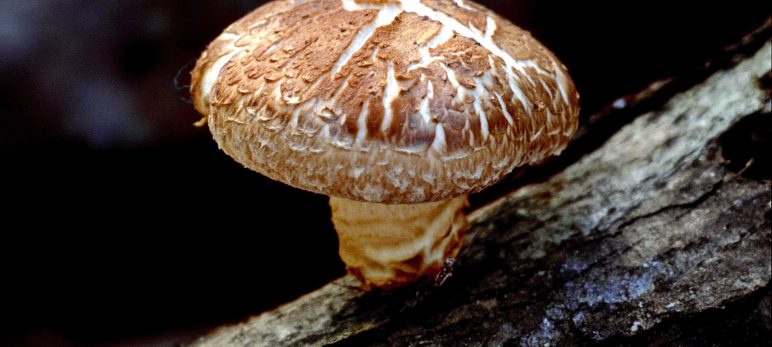An edible and medicinal mushroom
Lentinula edodes is an edible wild mushroom native to eastern Asia. It grows in the deciduous forests of Asia under warm and humid climatic conditions. The fungus was first described scientifically as Agaricus edodes by Miles Joseph Berkeley in 1877. It was placed in the genus Lentinula by David Pegler in 1976. The shiitake name comes from the Japanese term “shii” that suggests oak and the term “take” that means mushroom.
Shiitake mushroom has a golden or dark brown umbrella-shaped cap, wide-open veils, and tan gills. The stipe is smooth, fibrous, and light brown with no ring. It flourishes from spring to late summer or early fall and is considered to be the most popular edible mushroom in China and Japan, where it has been used for thousands of years in cookery and in practical medicine. Also, shiitake stipe was used to substitute wheat flour to make bread.
Nowdays, shiitake is cultivated for commercial proposes in many countries around the world and can be characterized as one of the most popular mushrooms in Asia, USA and Europe, because of its taste and especially its health benefits. Everyone who has tasted this mushroom says that he or she will never forget the smoky flavor and the meat-like texture. Shiitake mushrooms go well in meat dishes, soups, sauces and gravies or can be prepared as a side dish.
Besides of their excellent taste, these mushrooms are very popular because of their important nutritional value. They are a good source of nutrients since they contain eight essential amino acids as well as thiamin, riboflavin, niacin, and dietary fiber and enzymes. They also contain ergosterol, which can be converted by sunlight into vitamin D. So, shiitake can be an excellent food choice for everybody who follows a healthy and balanced diet.
Author: Efi Makri
Check out the *NEW* Mushring Probability Model (MPM) forecast maps for wild mushrooms fruiting



